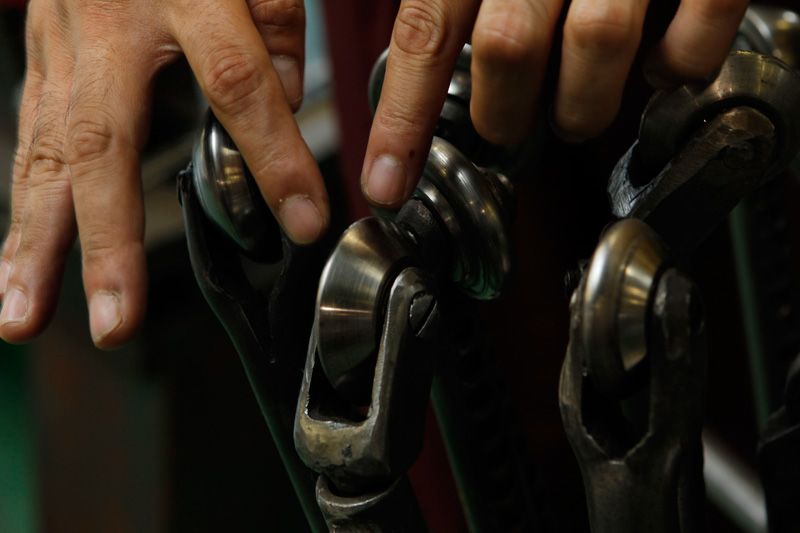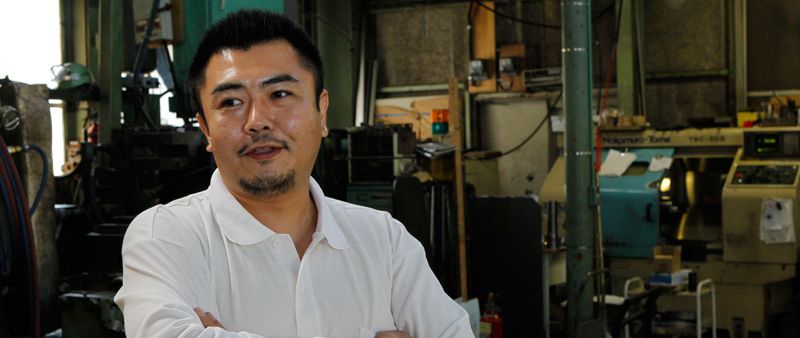
The Masters of Precision Metal Spinning at Kitajima Shibori Seisakusho
Economy Science Technology- English
- 日本語
- 简体字
- 繁體字
- Français
- Español
- العربية
- Русский
Tokyo’s Ōta City, home to some 4,000 factories and workshops, has become known as one of Japan’s foremost monozukuri (manufacturing craftsmanship) districts. Many of the unique companies here may be classed as small to medium-sized enterprises, but their products provide fundamental support for advanced technologies at a world-class level.
One such company is Kitajima Shibori Seisakusho, among the nation’s most skilled shops at shaping metal with spinning techniques. This company’s strength lies in its ability to create special, high-precision shapes for use in applications such as parts for American aircraft and satellites, or the nose cone of Japan’s own H2 rocket. These parts are not produced by machine, though: they are fashioned by the hands of skilled craftsmen.
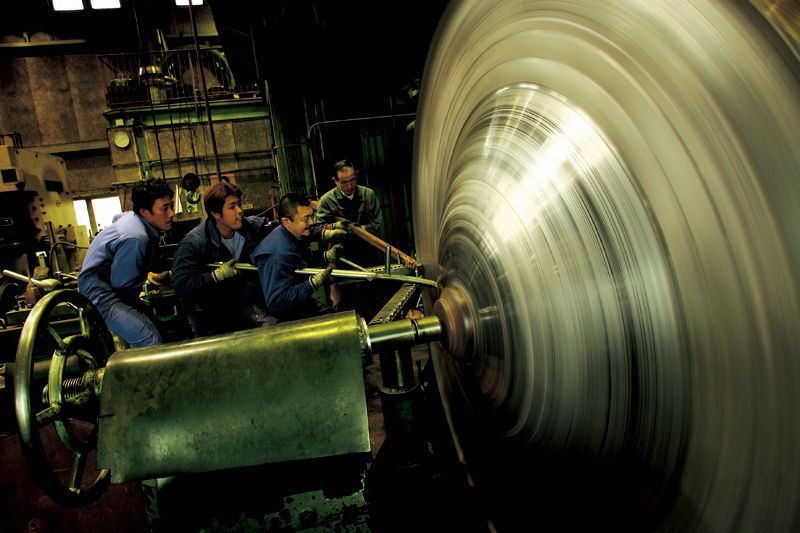
Corporate Data
Company name: Kitajima Shibori Seisakusho Co., Ltd.
Address: 2-3-10 Keihinjima, Ōta-ku, Tokyo 143-0003
Representative: Kitajima Minoru, President
Business: General metal plate plasticity processing, metal spinning, machine pressing, nonstandard shape spinning, and a full range of associated processing and sheet metal processing
Employees: 20
Website: http://www.kitajimashibori.co.jp/
Shaping Metal Like Clay
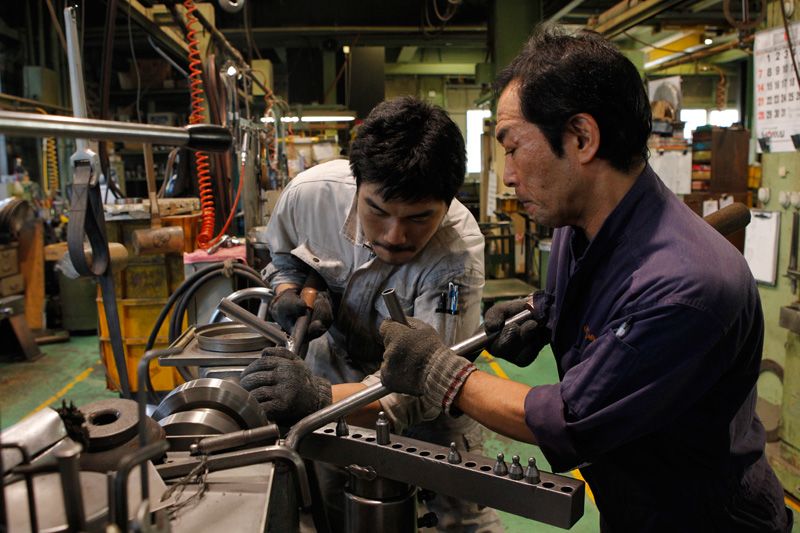 Spinning is a metalworking technique believed to have been carried out in Europe during the Middle Ages. It makes use of the elasticity of metals to form various shapes. Workers rotate a piece of metal at high speed and apply pressure to it with rod-like tools to shape the material into the desired form. The process is similar to shaping clay on a potter’s wheel.
Spinning is a metalworking technique believed to have been carried out in Europe during the Middle Ages. It makes use of the elasticity of metals to form various shapes. Workers rotate a piece of metal at high speed and apply pressure to it with rod-like tools to shape the material into the desired form. The process is similar to shaping clay on a potter’s wheel.
The spinning machine that serves as the “wheel” rotates at great speed on a horizontal axis. After mounting a disk-shaped sheet of metal on this machine, craftsmen alter its form by repeatedly pushing tools against it, a little at a time, as it rotates. The metal is thus fashioned so that it matches the form of a shaped block called a mandrel, which is fixed to the machine.
Metals that can be worked in this way include iron, aluminum, stainless steel, copper, and rare metals. These are all hard materials, but once they are mounted they can change their shape before your eyes, just like clay. Normally only one person works on a spinning piece, but for large jobs, such as a three-meter parabolic antenna, two or three people need to join their strength and shape the metal with a single tool.
The company’s senior managing director, Kitajima Takahiro, is himself a metal spinning craftsman. “To master this technique, you have to learn with your body how much pressure to put on the tool,” he explains.
If you apply too much pressure to a spinning piece of metal, you can split or crack it. Too little pressure, though, and you fail to produce the shape you want, or take too much time to create it. The delicate adjustments in touch are not something that can be taught—they only come through working with metal day in, day out.
“Our craftsmen can tell how a piece of metal is shaping by signs as subtle as the sound the metal produces as it's being worked,” says Kitajima. “It takes about ten years before you can call yourself a craftsman. When you get really skilled, you develop a deep, accurate sense for the material you’re working on.”
Skills Cannot Be Sold Cheaply
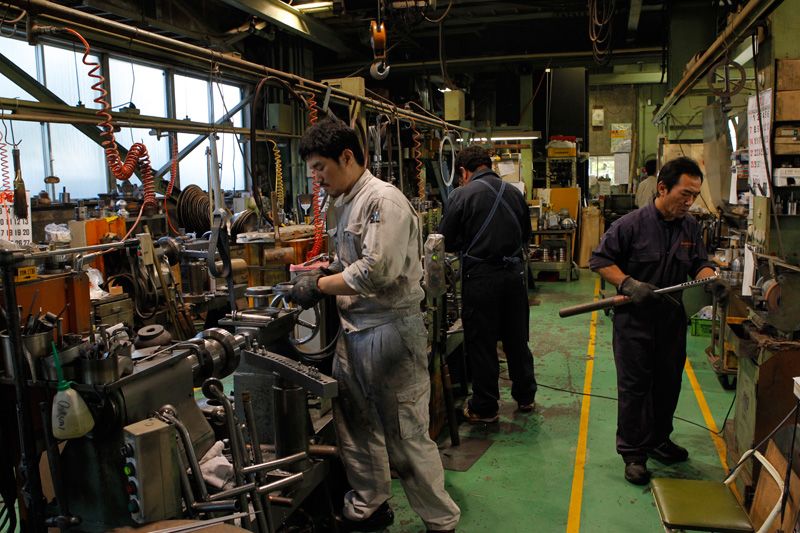
Working with greater precision than machines, these craftsmen manufacture products that support advanced technologies.
Kitajima Shibori Seisakusho is far from the only place where craftsmen spin metal by hand. So why are this company’s skills rated as among the best in the world? Kitajima says that his workers’ abilities have been honed by the vision and the spirit of rising to challenges that have been passed down through generations of craftsmen.
“My grandfather, who founded the company, made tatami floor mats until before World War II,” he says. “After the war, though, he could see an increasing influx of American culture into Japan, so he closed down the tatami business. He sent his oldest son, my uncle [who served as the firm's first president], to learn metal spinning as a live-in apprentice, and he built this company.”
In the early years after the company’s 1947 launch, the workers perfected their spinning technique by producing everyday utensils like pots, frying pans, and kettles. Learning their craft in this way, they gradually became able to take on nonstandard shapes.
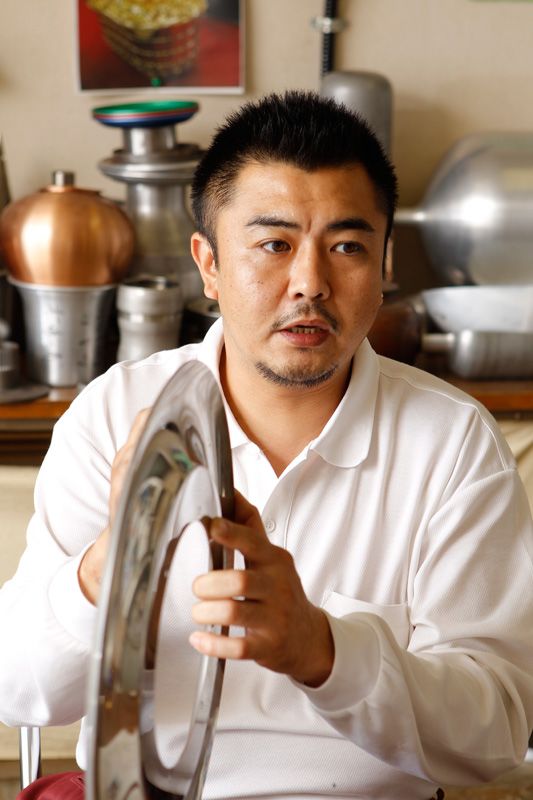
Senior managing director Kitajima Takahiro talks of the pride of the craftsman.
“My father [the second president] was the sort of man who would never say, ‘We can’t do that.’ Whenever we had a customer who needed a difficult shape that other workshops had refused to tackle, my father would always say, ‘Right, let’s see what we can do.’ There were even times when he remodeled his machinery just to meet a customer’s request. He always rose to the challenge of new jobs, and he took on many different metals and shapes. I believe the skills we have now are the result of his efforts.”
Today the company has brought in automatic spinning machines to aid in mass production, and it no longer relies solely on craftsmen for metal spinning. Nonetheless, for low-volume production to fill orders of 100–200 units, working by hand remains the most cost-effective method. The workers’ skills provide more precision than a machine, allowing the firm to provide complex shapes to meet its customers’ needs.
“People say our products are more expensive than those of other companies, but that’s because we have absolute confidence in our craftsmen’s hands,” asserts Kitajima. “We don’t want to sell our skills cheaply.” Thus speaks the pride of an urban workshop, backed up by its technological excellence.
(Originally written in Japanese by Hotehama Nami, freelance writer. Photographs by Ōkubo Keizō.)
manufacturing monozukuri metal spinning Kitajima Shibori Seisakusho urban workshop SME Ōta Ward Ōta City metalworking
